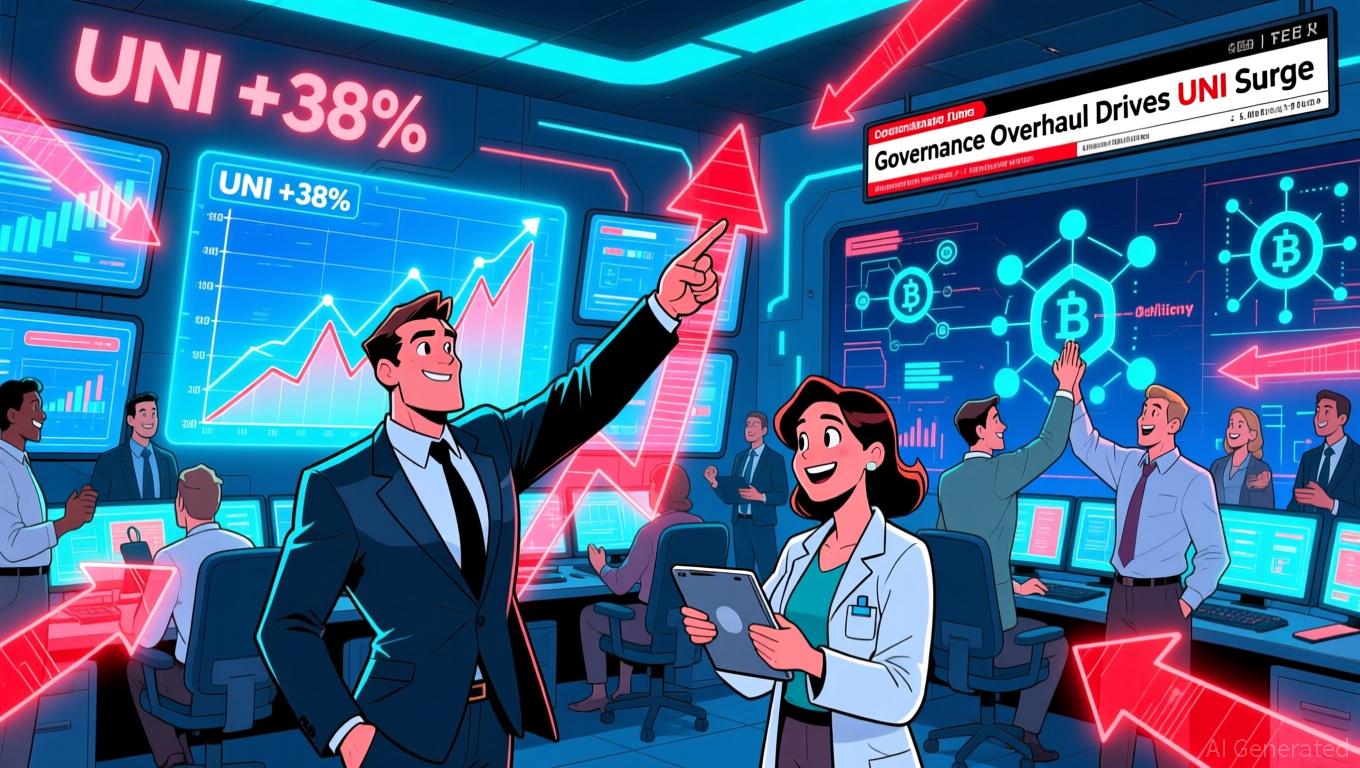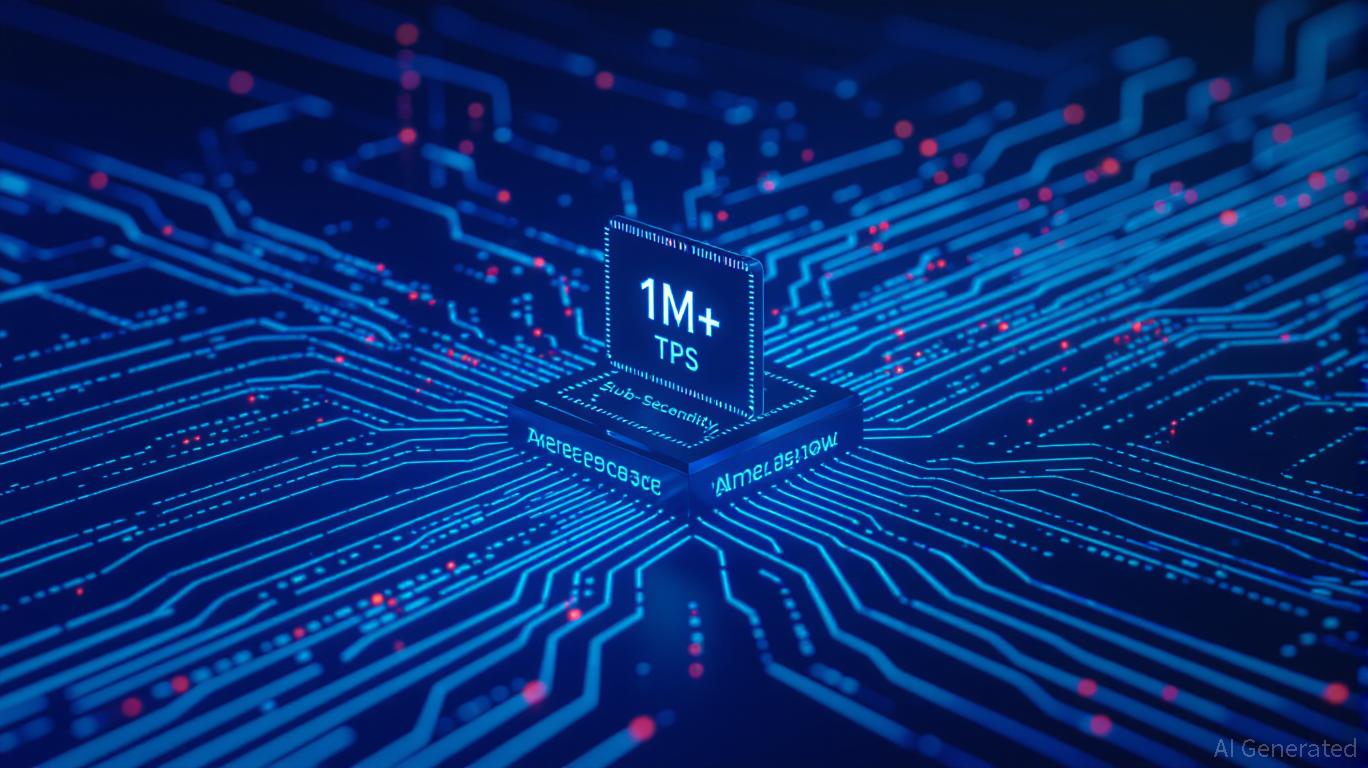XRP News Today: After SEC Ruling, XRP Stands Out as a Worldwide Bridge Currency
- Ripple CEO Brad Garlinghouse clarified the company's independence from XRP, emphasizing decentralized governance and SEC lawsuit resolution in August 2025. - XRP's role as a bridge currency enables fast, low-cost cross-border payments for 300+ institutions, reducing costs by up to 70% compared to traditional systems. - Post-lawsuit regulatory clarity boosted XRP's price over 500% to $3.10 in 2025, with institutional ETP demand reaching $214M and first U.S. XRP ETF launched in September 2025. - Ripple's $
Ripple CEO Brad Garlinghouse has worked to clear up ongoing confusion regarding the distinction between Ripple, the company, and

The CEO highlighted that, unlike Ripple which operates as a corporation with formal leadership and a board, XRP does not have a central authority. "People sometimes claim, 'XRP has a CEO,' and I ask, who would that be?" Garlinghouse said, noting that the XRP ecosystem is made up of hundreds of independent participants and businesses. The governance of the XRP Ledger further demonstrates this decentralization: any network upgrades require broad consensus, and even proposals backed by Ripple have been turned down, underscoring the community-led nature of decision-making.
The conclusion of the SEC case, which required Ripple to pay a $125 million fine for institutional sales of XRP but affirmed its non-security status for retail transactions, has brought regulatory certainty and increased market optimism. Garlinghouse described the settlement as a "strategic win," emphasizing that it enables Ripple to concentrate on growing its cross-border payments business and institutional collaborations. He also reaffirmed his support for XRP through public gestures, such as getting an XRP-themed tattoo, to show his confidence in the asset's long-term value.
XRP continues to serve as a key bridge asset for international payments, forming the backbone of Ripple's business model. The token powers fast, cost-effective cross-border transfers through RippleNet, which is utilized by more than 300 financial organizations, including Santander, SBI Holdings, and Standard Chartered. By minimizing dependence on conventional correspondent banking, XRP allows for transactions to settle within seconds instead of days, and can reduce costs by as much as 70%. Ripple's recent purchase of Hidden Road, a leading institutional custody provider, further enhances its infrastructure and could attract significant institutional investment.
Industry experts have reacted favorably to the new regulatory landscape. In early 2025, XRP's value jumped over 500%, peaking at $3.10, while institutional interest in XRP-based exchange-traded products (ETPs) reached $214 million in the first quarter. Analysts such as Marcus Lin from BlockEdge Research believe that if XRP surpasses $2.40, it could aim for $3.50 or more, though price swings remain a concern. The debut of the first U.S.-listed spot XRP ETF, REX-Osprey XRPR, in September 2025, further reflects increasing institutional involvement.
Garlinghouse also pointed to broader regulatory changes under the Trump administration, commending moves to establish "practical, reasonable" crypto regulations. Ripple's advocacy for stablecoin rules and market structure reforms aligns with its call for federal regulatory clarity, which it argues will benefit both businesses and consumers. At the same time, Ripple has adjusted its communication approach, discontinuing quarterly XRP market updates to prevent possible regulatory misinterpretation.
As XRP evolves from a speculative investment to a widely used financial instrument, its future will depend on institutional uptake, regulatory consistency, and technological progress. Ripple is continuing to upgrade the XRP Ledger—for example, by introducing Multi-Purpose Tokens for real-world assets—to broaden its applications beyond payments. With legal issues resolved and global alliances growing, XRP is set to play a crucial role in transforming international finance, connecting legacy systems with blockchain-powered solutions.
Disclaimer: The content of this article solely reflects the author's opinion and does not represent the platform in any capacity. This article is not intended to serve as a reference for making investment decisions.
You may also like
Internet Computer's Unexpected Rise in 2025: Will the Momentum Last or Is It Just Temporary Excitement?
- Dfinity's 2025 AI-driven upgrades and Caffeine tool triggered a 56% ICP price surge, boosting trading volume by 131%. - Partnerships with Microsoft and Google Cloud enhance ICP's scalability, addressing blockchain interoperability challenges. - Speculation about Coinbase listing and $1.14B trading volume highlight institutional interest, aligning with Coinbase's 2025 strategy. - Regulatory scrutiny and recent 11% price drop underscore risks, questioning ICP's sustainability amid AI-blockchain convergence.

Bitcoin Updates: The Two Sides of Leverage—A Whale Faces $3 Million Loss While an Insurer Gains €1.12 Billion
- Unipol Assicurazioni (UNI) reported €1.12B net profit in Q1-Q3 2025, driven by BPR Banca gains and strong life/property segments despite market shifts. - Crypto whale "BTC OG" incurred $3M unrealized loss on leveraged BTC/ETH longs, contrasting UNI's stability amid volatile leveraged trading risks. - UNI's 158% solvency ratio and cost-cutting/digital transformation efforts highlight traditional insurers' resilience versus crypto's amplified market sensitivity. - Divergent outcomes underscore institutiona

Uniswap News Today: Uniswap's 100 Million UNI Token Burn Sparks 38% Rally as Deflationary Changes Transform DeFi
- Uniswap's UNI token surged 38% after the Foundation and Labs launched the "UNIfication" governance overhaul, activating protocol fees and token burns. - The proposal includes a 100M UNI retroactive burn (16% of supply), fee redirection to deflationary mechanisms, and a 20M UNI Growth Budget for DeFi innovation. - Structural changes consolidate teams under Uniswap Labs, eliminate interface fees, and establish a 5-member board to align governance with DUNA's decentralized framework. - Market reaction saw U

Solana's Value Soars: Key Factors Fueling Investor Confidence Toward the End of 2025
- Solana (SOL) surges in late 2025 due to infrastructure upgrades, institutional adoption, and strong on-chain metrics. - Firedancer validator client boosts TPS to 1M+, while Alpenglow aims for sub-second finality, enhancing scalability for real-time finance. - Institutional holdings of SOL jump 841% to 16M tokens, with Visa and R3 partnerships validating its role in cross-chain global finance. - Network records 17.2M active addresses and 543M weekly transactions, maintaining 8% DeFi market share despite b
